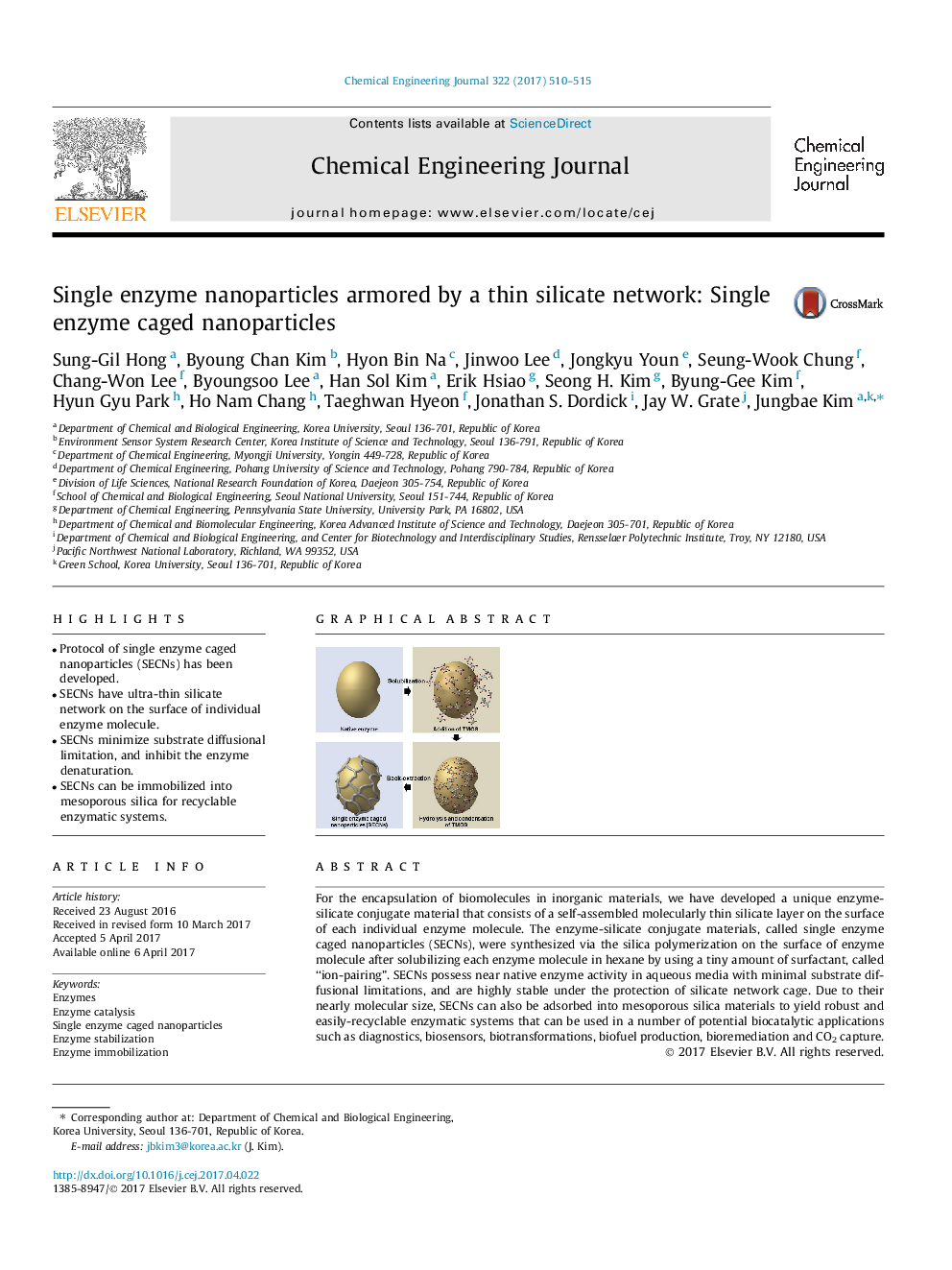| Article ID | Journal | Published Year | Pages | File Type |
|---|---|---|---|---|
| 6465716 | Chemical Engineering Journal | 2017 | 6 Pages |
â¢Protocol of single enzyme caged nanoparticles (SECNs) has been developed.â¢SECNs have ultra-thin silicate network on the surface of individual enzyme molecule.â¢SECNs minimize substrate diffusional limitation, and inhibit the enzyme denaturation.â¢SECNs can be immobilized into mesoporous silica for recyclable enzymatic systems.
For the encapsulation of biomolecules in inorganic materials, we have developed a unique enzyme-silicate conjugate material that consists of a self-assembled molecularly thin silicate layer on the surface of each individual enzyme molecule. The enzyme-silicate conjugate materials, called single enzyme caged nanoparticles (SECNs), were synthesized via the silica polymerization on the surface of enzyme molecule after solubilizing each enzyme molecule in hexane by using a tiny amount of surfactant, called “ion-pairing”. SECNs possess near native enzyme activity in aqueous media with minimal substrate diffusional limitations, and are highly stable under the protection of silicate network cage. Due to their nearly molecular size, SECNs can also be adsorbed into mesoporous silica materials to yield robust and easily-recyclable enzymatic systems that can be used in a number of potential biocatalytic applications such as diagnostics, biosensors, biotransformations, biofuel production, bioremediation and CO2 capture.
Graphical abstractDownload high-res image (69KB)Download full-size image
